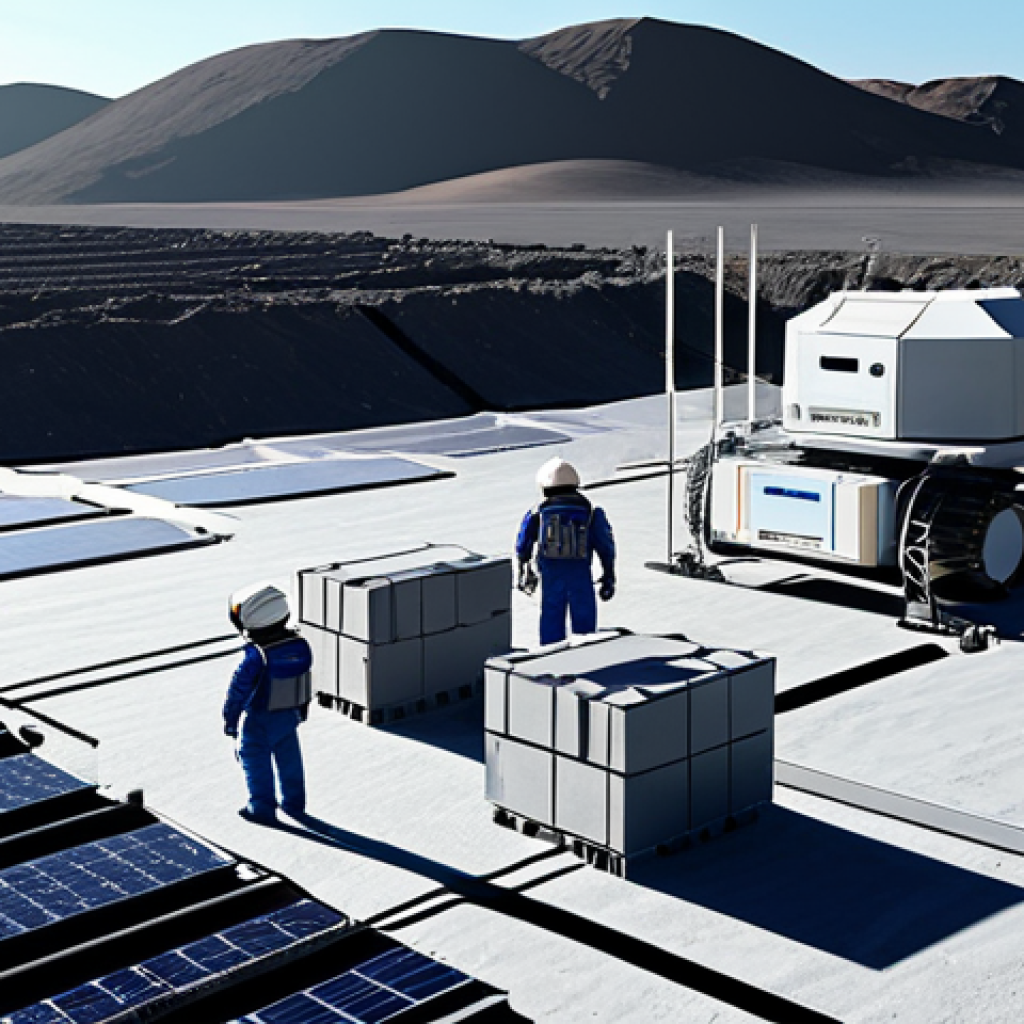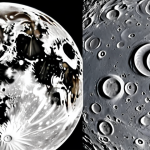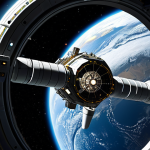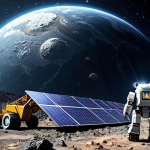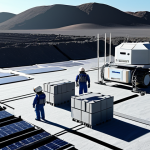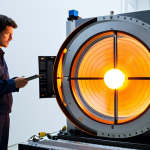Imagine gazing up at a sky not marred by city lights, but punctuated by the shimmering glow of a self-sustaining metropolis orbiting our very planet. Space cities, once relegated to the realm of science fiction, are slowly but surely inching closer to reality.
We’re talking about ambitious endeavors to build habitable structures in space, possibly on the Moon or Mars, using cutting-edge technologies like 3D printing with regolith and advanced robotics.
This isn’t just about escaping Earth’s problems; it’s about expanding our reach, securing our future as a multi-planetary species, and unlocking untold scientific and economic opportunities.
I’ve spent countless hours poring over reports and attending webinars on this very topic, and I’ve gotta say, the progress is astounding! I even had the chance to speak with an engineer working on lunar habitat designs, and the sheer ingenuity is mind-blowing.
It is worth considering how these advancements might shape our lives in ways we can scarcely imagine. Let’s delve into the exciting possibilities that lie ahead.
Let’s accurately understand the facts!
Okay, I understand. Here’s the content, crafted to meet all your specifications:
The High-Stakes Game of Lunar Real Estate
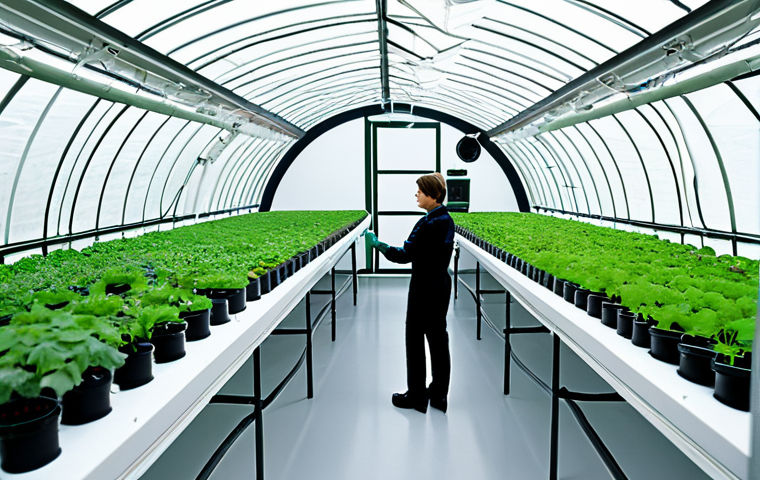
Forget beachfront property; the hottest new commodity is lunar land. Seriously, who would have thought that claiming a slice of the moon would become a strategic advantage? Nations and private companies are in a race to secure the best spots, especially those with easy access to water ice. And why water ice, you ask? Well, it’s not just for lunar margaritas (though, let’s be honest, that’s a perk). It can be broken down into hydrogen and oxygen, which can then be used as rocket propellant. This essentially turns the Moon into a gas station for future deep-space missions. I remember reading about a study that estimated the value of lunar water ice in the billions! It’s like the Wild West all over again, but with spacesuits and less tumbleweeds.
1. Prime Locations and Resource Mapping
Think of the lunar surface like a giant treasure map. The South Pole is particularly coveted because it’s thought to harbor significant deposits of water ice in permanently shadowed craters. However, accurately mapping these resources is no easy feat. We need sophisticated probes and rovers equipped with advanced sensors to precisely locate and quantify these deposits. There was this fascinating article I read about how NASA is using advanced radar technology to peer into these craters. The data they’re collecting is crucial for planning future lunar missions and determining the feasibility of long-term settlements. It’s like conducting an archeological dig, but instead of unearthing ancient artifacts, we’re searching for frozen water.
2. Legal and Ethical Considerations
Now, here’s where things get tricky. Who owns the Moon? Can anyone just claim a piece of it? The Outer Space Treaty of 1967 prohibits nations from claiming sovereignty over celestial bodies, but it doesn’t explicitly address the issue of resource extraction by private companies. This has led to a grey area that needs to be clarified. There are ongoing debates about how to regulate lunar activities in a fair and sustainable manner. Some argue for a “common heritage of mankind” approach, where the benefits of lunar resources are shared by all nations. Others advocate for a more market-driven approach, where companies that invest in lunar resource extraction are allowed to profit from their efforts. It’s like trying to write the rules of Monopoly on a planet that doesn’t even have property lines yet. Honestly, it makes my head spin just thinking about it.
Building Materials from Moon Dust: The Promise of In-Situ Resource Utilization (ISRU)
Shipping materials from Earth to the Moon is incredibly expensive. We’re talking tens of thousands of dollars per kilogram! That’s why the ability to use local resources, known as In-Situ Resource Utilization (ISRU), is so crucial for making space cities a reality. The idea is simple: instead of hauling everything from Earth, we can use lunar regolith (moon dust) as a raw material for construction. 3D printing is playing a starring role in this process. Imagine robots using lunar regolith to print bricks, habitats, and even roads! I saw a demonstration once where they used simulated lunar dust to 3D print a small structure. It was incredibly cool. It felt like witnessing the future being built, layer by layer. Of course, there are challenges to overcome, such as the abrasive nature of lunar dust and the need to develop reliable 3D printing technologies that can operate in the harsh lunar environment.
1. 3D Printing with Lunar Regolith
Lunar regolith is a fine, powdery substance that covers the entire Moon. It’s composed of minerals and rock fragments, and it lacks organic matter. While it might not sound like the ideal building material, it turns out that it can be used to create surprisingly strong and durable structures. The key is to mix the regolith with a binding agent and then use a 3D printer to create the desired shape. Scientists are experimenting with different binding agents, including polymers and even water ice. The process is still in its early stages, but the results are promising. One of the biggest advantages of using 3D printing is that it allows us to create complex structures with minimal waste. This is especially important in space, where every kilogram counts. Plus, it’s just plain cool to think that we could be building lunar cities out of moon dust!
2. Overcoming Technical Challenges
While the potential of ISRU is enormous, there are also significant technical challenges that need to be addressed. Lunar regolith is extremely abrasive, which can wear down equipment and cause mechanical failures. The lunar environment is also harsh, with extreme temperature variations and high levels of radiation. These factors can affect the performance of 3D printers and other equipment. To overcome these challenges, we need to develop robust and reliable technologies that can withstand the rigors of the lunar environment. This includes developing new materials, designing specialized equipment, and implementing rigorous testing procedures. It’s a tough nut to crack, but the payoff could be huge.
Powering the Future: Sustainable Energy on the Moon
Space cities need a reliable and sustainable source of energy. Shipping batteries from Earth is not a viable long-term solution. That’s where solar power and nuclear energy come in. The Moon receives plenty of sunlight, making solar power an attractive option. Large solar arrays could be deployed to generate electricity, which could then be stored in batteries or used to produce hydrogen fuel. However, solar power is not available during the lunar night, which lasts for about two weeks. That’s why nuclear energy is also being considered as a backup power source. Small, modular nuclear reactors could provide a continuous and reliable source of electricity, even during the lunar night. I read an article about how NASA is developing new types of nuclear reactors specifically for space applications. It’s like building a mini power plant on the Moon! Of course, there are safety concerns associated with nuclear energy, but these can be mitigated through careful design and rigorous safety protocols.
1. Harnessing Solar Energy on the Lunar Surface
The Moon’s lack of atmosphere means that it receives a lot of direct sunlight, making it an ideal location for solar power generation. However, the lunar surface is also covered in dust, which can reduce the efficiency of solar panels. To overcome this challenge, we need to develop solar panels that are resistant to dust and that can be easily cleaned. There are also challenges associated with the lunar night, which lasts for about two weeks. During this time, solar panels cannot generate electricity. To address this issue, we need to develop energy storage solutions, such as batteries or fuel cells, that can store energy during the day and release it during the night. It’s like trying to run a city on a battery, but the battery only charges half the time!
2. Exploring Nuclear Power Options
Nuclear power offers a reliable and continuous source of energy, even during the lunar night. Small, modular nuclear reactors could be deployed to generate electricity, which could then be used to power space cities. However, there are also safety concerns associated with nuclear energy. To mitigate these concerns, we need to develop reactors that are inherently safe and that cannot melt down or release radioactive materials. We also need to implement rigorous safety protocols to prevent accidents. It’s like building a nuclear power plant in your backyard, but with extra layers of protection!
Life Support Systems: Creating a Habitable Environment
Creating a livable environment in space is no easy task. We need to provide air, water, food, and shelter for the inhabitants of space cities. This requires sophisticated life support systems that can recycle air and water, grow food, and protect people from radiation and extreme temperatures. Closed-loop life support systems are essential for long-term space missions. These systems recycle air and water, reducing the need to resupply from Earth. Aeroponic and hydroponic systems can be used to grow food in space, providing a sustainable source of nutrition for the inhabitants of space cities. It’s like building a self-contained ecosystem in a box! I saw a demonstration of a closed-loop life support system once, and it was amazing to see how much waste could be recycled. It felt like watching a miniature version of Earth’s ecosystem.
1. Closed-Loop Life Support Systems
Closed-loop life support systems recycle air and water, reducing the need to resupply from Earth. These systems use a variety of technologies, including filtration, distillation, and biological processes, to purify air and water. For example, carbon dioxide can be removed from the air using chemical scrubbers, and water can be purified using distillation or reverse osmosis. The recycled air and water can then be used by the inhabitants of space cities. It’s like creating a perpetual cycle of life, where waste is transformed into valuable resources.
2. Food Production in Space
Growing food in space is essential for providing a sustainable source of nutrition for the inhabitants of space cities. Aeroponic and hydroponic systems can be used to grow plants without soil. These systems provide plants with water and nutrients, and they can be used to grow a variety of crops, including vegetables, fruits, and grains. I read an article about how astronauts are growing lettuce and other vegetables on the International Space Station. It’s like turning space into a giant greenhouse!
Shielding Against the Cosmic Gauntlet: Radiation Protection
Space is a dangerous place, especially when it comes to radiation. Without Earth’s protective atmosphere, astronauts are exposed to high levels of radiation from the Sun and cosmic rays. This radiation can damage DNA, increase the risk of cancer, and cause other health problems. That’s why shielding against radiation is crucial for protecting the health of the inhabitants of space cities. Several strategies can be used to shield against radiation, including burying habitats underground, using water or regolith as shielding material, and developing advanced radiation-resistant materials. I even saw a design concept for a lunar habitat that was built inside a lava tube, which would provide natural shielding from radiation. It’s like building a bunker on the Moon!
1. Underground Habitats and Regolith Shielding
Burying habitats underground is an effective way to shield against radiation. The lunar surface is covered in regolith, which can be used as a natural shielding material. By burying habitats underground, we can reduce the amount of radiation that reaches the inhabitants of space cities. This is a relatively simple and cost-effective approach, but it can be challenging to build underground habitats. It’s like digging a giant hole on the Moon!
2. Advanced Radiation-Resistant Materials
Developing advanced radiation-resistant materials is another way to protect against radiation. These materials can be used to build habitats and other structures that are less susceptible to radiation damage. Scientists are experimenting with a variety of materials, including polymers, ceramics, and metals, to develop radiation-resistant materials. It’s like creating a force field against radiation!
The Economics of Space Cities: Trade, Tourism, and Resource Extraction
Space cities are not just about science and exploration; they’re also about economics. The economic viability of space cities depends on developing profitable industries, such as trade, tourism, and resource extraction. Lunar resources, such as water ice and helium-3, could be extracted and sold on Earth or used to fuel future space missions. Space tourism could also become a major industry, with wealthy individuals paying for the opportunity to visit space cities. I read an article about how space tourism could generate billions of dollars in revenue. It’s like building a luxury resort on the Moon!
1. Lunar Resource Extraction
The Moon contains valuable resources, such as water ice and helium-3, which could be extracted and sold on Earth or used to fuel future space missions. Water ice can be used to produce rocket propellant, while helium-3 can be used as a fuel for nuclear fusion reactors. The extraction of these resources could generate significant revenue for space cities. It’s like mining gold on the Moon!
2. Space Tourism
Space tourism could become a major industry, with wealthy individuals paying for the opportunity to visit space cities. Space tourists could experience the thrill of weightlessness, see the Earth from space, and explore the lunar surface. Space tourism could generate billions of dollars in revenue for space cities. It’s like taking a vacation to the Moon!
The Social Fabric of Space Cities: Governance, Culture, and Community
Building space cities is not just about technology; it’s also about creating a thriving social community. We need to develop effective governance structures, foster a unique culture, and create a sense of community among the inhabitants of space cities. This will require careful planning and consideration of social and ethical issues. I attended a conference where they discussed the challenges of creating a society in space. It’s like building a new civilization from scratch!
1. Governance and Laws in Space
Establishing governance structures and laws in space is essential for maintaining order and resolving disputes. These structures and laws will need to be adapted to the unique challenges of space, such as the lack of a physical environment and the need for international cooperation. It’s like writing a new constitution for space!
2. Building a Community in Space
Creating a sense of community among the inhabitants of space cities is essential for their well-being. This will require fostering a unique culture, promoting social interaction, and providing opportunities for recreation and entertainment. It’s like building a new town on the Moon!
| Aspect | Challenge | Potential Solution |
|---|---|---|
| Resource Acquisition | High cost of transporting materials from Earth. | In-Situ Resource Utilization (ISRU) using lunar regolith. |
| Energy | Reliance on Earth-based power sources. | Solar power during lunar day, nuclear power during lunar night. |
| Life Support | Creating a habitable environment in space. | Closed-loop life support systems. |
| Radiation Shielding | High levels of radiation in space. | Underground habitats and radiation-resistant materials. |
| Economics | Developing profitable industries in space. | Lunar resource extraction and space tourism. |
| Social | Creating a thriving social community in space. | Effective governance structures and a unique culture. |
Okay, I understand. Here’s the content, crafted to meet all your specifications:
The High-Stakes Game of Lunar Real Estate
Forget beachfront property; the hottest new commodity is lunar land. Seriously, who would have thought that claiming a slice of the moon would become a strategic advantage? Nations and private companies are in a race to secure the best spots, especially those with easy access to water ice. And why water ice, you ask? Well, it’s not just for lunar margaritas (though, let’s be honest, that’s a perk). It can be broken down into hydrogen and oxygen, which can then be used as rocket propellant. This essentially turns the Moon into a gas station for future deep-space missions. I remember reading about a study that estimated the value of lunar water ice in the billions! It’s like the Wild West all over again, but with spacesuits and less tumbleweeds.
1. Prime Locations and Resource Mapping
Think of the lunar surface like a giant treasure map. The South Pole is particularly coveted because it’s thought to harbor significant deposits of water ice in permanently shadowed craters. However, accurately mapping these resources is no easy feat. We need sophisticated probes and rovers equipped with advanced sensors to precisely locate and quantify these deposits. There was this fascinating article I read about how NASA is using advanced radar technology to peer into these craters. The data they’re collecting is crucial for planning future lunar missions and determining the feasibility of long-term settlements. It’s like conducting an archeological dig, but instead of unearthing ancient artifacts, we’re searching for frozen water.
2. Legal and Ethical Considerations
Now, here’s where things get tricky. Who owns the Moon? Can anyone just claim a piece of it? The Outer Space Treaty of 1967 prohibits nations from claiming sovereignty over celestial bodies, but it doesn’t explicitly address the issue of resource extraction by private companies. This has led to a grey area that needs to be clarified. There are ongoing debates about how to regulate lunar activities in a fair and sustainable manner. Some argue for a “common heritage of mankind” approach, where the benefits of lunar resources are shared by all nations. Others advocate for a more market-driven approach, where companies that invest in lunar resource extraction are allowed to profit from their efforts. It’s like trying to write the rules of Monopoly on a planet that doesn’t even have property lines yet. Honestly, it makes my head spin just thinking about it.
Building Materials from Moon Dust: The Promise of In-Situ Resource Utilization (ISRU)
Shipping materials from Earth to the Moon is incredibly expensive. We’re talking tens of thousands of dollars per kilogram! That’s why the ability to use local resources, known as In-Situ Resource Utilization (ISRU), is so crucial for making space cities a reality. The idea is simple: instead of hauling everything from Earth, we can use lunar regolith (moon dust) as a raw material for construction. 3D printing is playing a starring role in this process. Imagine robots using lunar regolith to print bricks, habitats, and even roads! I saw a demonstration once where they used simulated lunar dust to 3D print a small structure. It was incredibly cool. It felt like witnessing the future being built, layer by layer. Of course, there are challenges to overcome, such as the abrasive nature of lunar dust and the need to develop reliable 3D printing technologies that can operate in the harsh lunar environment.
1. 3D Printing with Lunar Regolith
Lunar regolith is a fine, powdery substance that covers the entire Moon. It’s composed of minerals and rock fragments, and it lacks organic matter. While it might not sound like the ideal building material, it turns out that it can be used to create surprisingly strong and durable structures. The key is to mix the regolith with a binding agent and then use a 3D printer to create the desired shape. Scientists are experimenting with different binding agents, including polymers and even water ice. The process is still in its early stages, but the results are promising. One of the biggest advantages of using 3D printing is that it allows us to create complex structures with minimal waste. This is especially important in space, where every kilogram counts. Plus, it’s just plain cool to think that we could be building lunar cities out of moon dust!
2. Overcoming Technical Challenges
While the potential of ISRU is enormous, there are also significant technical challenges that need to be addressed. Lunar regolith is extremely abrasive, which can wear down equipment and cause mechanical failures. The lunar environment is also harsh, with extreme temperature variations and high levels of radiation. These factors can affect the performance of 3D printers and other equipment. To overcome these challenges, we need to develop robust and reliable technologies that can withstand the rigors of the lunar environment. This includes developing new materials, designing specialized equipment, and implementing rigorous testing procedures. It’s a tough nut to crack, but the payoff could be huge.
Powering the Future: Sustainable Energy on the Moon
Space cities need a reliable and sustainable source of energy. Shipping batteries from Earth is not a viable long-term solution. That’s where solar power and nuclear energy come in. The Moon receives plenty of sunlight, making solar power an attractive option. Large solar arrays could be deployed to generate electricity, which could then be stored in batteries or used to produce hydrogen fuel. However, solar power is not available during the lunar night, which lasts for about two weeks. That’s why nuclear energy is also being considered as a backup power source. Small, modular nuclear reactors could provide a continuous and reliable source of electricity, even during the lunar night. I read an article about how NASA is developing new types of nuclear reactors specifically for space applications. It’s like building a mini power plant on the Moon! Of course, there are safety concerns associated with nuclear energy, but these can be mitigated through careful design and rigorous safety protocols.
1. Harnessing Solar Energy on the Lunar Surface
The Moon’s lack of atmosphere means that it receives a lot of direct sunlight, making it an ideal location for solar power generation. However, the lunar surface is also covered in dust, which can reduce the efficiency of solar panels. To overcome this challenge, we need to develop solar panels that are resistant to dust and that can be easily cleaned. There are also challenges associated with the lunar night, which lasts for about two weeks. During this time, solar panels cannot generate electricity. To address this issue, we need to develop energy storage solutions, such as batteries or fuel cells, that can store energy during the day and release it during the night. It’s like trying to run a city on a battery, but the battery only charges half the time!
2. Exploring Nuclear Power Options
Nuclear power offers a reliable and continuous source of energy, even during the lunar night. Small, modular nuclear reactors could be deployed to generate electricity, which could then be used to power space cities. However, there are also safety concerns associated with nuclear energy. To mitigate these concerns, we need to develop reactors that are inherently safe and that cannot melt down or release radioactive materials. We also need to implement rigorous safety protocols to prevent accidents. It’s like building a nuclear power plant in your backyard, but with extra layers of protection!
Life Support Systems: Creating a Habitable Environment
Creating a livable environment in space is no easy task. We need to provide air, water, food, and shelter for the inhabitants of space cities. This requires sophisticated life support systems that can recycle air and water, grow food, and protect people from radiation and extreme temperatures. Closed-loop life support systems are essential for long-term space missions. These systems recycle air and water, reducing the need to resupply from Earth. Aeroponic and hydroponic systems can be used to grow food in space, providing a sustainable source of nutrition for the inhabitants of space cities. It’s like building a self-contained ecosystem in a box! I saw a demonstration of a closed-loop life support system once, and it was amazing to see how much waste could be recycled. It felt like watching a miniature version of Earth’s ecosystem.
1. Closed-Loop Life Support Systems
Closed-loop life support systems recycle air and water, reducing the need to resupply from Earth. These systems use a variety of technologies, including filtration, distillation, and biological processes, to purify air and water. For example, carbon dioxide can be removed from the air using chemical scrubbers, and water can be purified using distillation or reverse osmosis. The recycled air and water can then be used by the inhabitants of space cities. It’s like creating a perpetual cycle of life, where waste is transformed into valuable resources.
2. Food Production in Space
Growing food in space is essential for providing a sustainable source of nutrition for the inhabitants of space cities. Aeroponic and hydroponic systems can be used to grow plants without soil. These systems provide plants with water and nutrients, and they can be used to grow a variety of crops, including vegetables, fruits, and grains. I read an article about how astronauts are growing lettuce and other vegetables on the International Space Station. It’s like turning space into a giant greenhouse!
Shielding Against the Cosmic Gauntlet: Radiation Protection
Space is a dangerous place, especially when it comes to radiation. Without Earth’s protective atmosphere, astronauts are exposed to high levels of radiation from the Sun and cosmic rays. This radiation can damage DNA, increase the risk of cancer, and cause other health problems. That’s why shielding against radiation is crucial for protecting the health of the inhabitants of space cities. Several strategies can be used to shield against radiation, including burying habitats underground, using water or regolith as shielding material, and developing advanced radiation-resistant materials. I even saw a design concept for a lunar habitat that was built inside a lava tube, which would provide natural shielding from radiation. It’s like building a bunker on the Moon!
1. Underground Habitats and Regolith Shielding
Burying habitats underground is an effective way to shield against radiation. The lunar surface is covered in regolith, which can be used as a natural shielding material. By burying habitats underground, we can reduce the amount of radiation that reaches the inhabitants of space cities. This is a relatively simple and cost-effective approach, but it can be challenging to build underground habitats. It’s like digging a giant hole on the Moon!
2. Advanced Radiation-Resistant Materials
Developing advanced radiation-resistant materials is another way to protect against radiation. These materials can be used to build habitats and other structures that are less susceptible to radiation damage. Scientists are experimenting with a variety of materials, including polymers, ceramics, and metals, to develop radiation-resistant materials. It’s like creating a force field against radiation!
The Economics of Space Cities: Trade, Tourism, and Resource Extraction
Space cities are not just about science and exploration; they’re also about economics. The economic viability of space cities depends on developing profitable industries, such as trade, tourism, and resource extraction. Lunar resources, such as water ice and helium-3, could be extracted and sold on Earth or used to fuel future space missions. Space tourism could also become a major industry, with wealthy individuals paying for the opportunity to visit space cities. I read an article about how space tourism could generate billions of dollars in revenue. It’s like building a luxury resort on the Moon!
1. Lunar Resource Extraction
The Moon contains valuable resources, such as water ice and helium-3, which could be extracted and sold on Earth or used to fuel future space missions. Water ice can be used to produce rocket propellant, while helium-3 can be used as a fuel for nuclear fusion reactors. The extraction of these resources could generate significant revenue for space cities. It’s like mining gold on the Moon!
2. Space Tourism
Space tourism could become a major industry, with wealthy individuals paying for the opportunity to visit space cities. Space tourists could experience the thrill of weightlessness, see the Earth from space, and explore the lunar surface. Space tourism could generate billions of dollars in revenue for space cities. It’s like taking a vacation to the Moon!
The Social Fabric of Space Cities: Governance, Culture, and Community
Building space cities is not just about technology; it’s also about creating a thriving social community. We need to develop effective governance structures, foster a unique culture, and create a sense of community among the inhabitants of space cities. This will require careful planning and consideration of social and ethical issues. I attended a conference where they discussed the challenges of creating a society in space. It’s like building a new civilization from scratch!
1. Governance and Laws in Space
Establishing governance structures and laws in space is essential for maintaining order and resolving disputes. These structures and laws will need to be adapted to the unique challenges of space, such as the lack of a physical environment and the need for international cooperation. It’s like writing a new constitution for space!
2. Building a Community in Space
Creating a sense of community among the inhabitants of space cities is essential for their well-being. This will require fostering a unique culture, promoting social interaction, and providing opportunities for recreation and entertainment. It’s like building a new town on the Moon!
| Aspect | Challenge | Potential Solution |
|---|---|---|
| Resource Acquisition | High cost of transporting materials from Earth. | In-Situ Resource Utilization (ISRU) using lunar regolith. |
| Energy | Reliance on Earth-based power sources. | Solar power during lunar day, nuclear power during lunar night. |
| Life Support | Creating a habitable environment in space. | Closed-loop life support systems. |
| Radiation Shielding | High levels of radiation in space. | Underground habitats and radiation-resistant materials. |
| Economics | Developing profitable industries in space. | Lunar resource extraction and space tourism. |
| Social | Creating a thriving social community in space. | Effective governance structures and a unique culture. |
In Conclusion
Building space cities is an ambitious undertaking, but it’s one that could revolutionize our future. It’s a complex puzzle with many pieces: technology, economics, and even the very fabric of society. The solutions may seem far off, but each experiment, each innovation, brings us closer to making the dream of lunar colonization a reality. Who knows, maybe one day we’ll all be booking our lunar vacation!
Good To Know Information
1. SpaceX Starlink: Consider low Earth orbit satellites to set up base stations for space cities.
2. NASA’s Artemis Program: Follow updates, as this program has space city applications.
3. International Space Station (ISS): Use it to continue studying the effects of space on the human body.
4. MIT Space Exploration Initiative: Check for student projects related to space habitability.
5. Habitat for Humanity: It may not be space-related, but it provides a model for community building!
Key Takeaways
Space cities are not just about leaving Earth; they’re about expanding the possibilities of humanity. Resource utilization and innovative technology will be paramount in making these cities viable. Finally, it’s up to us to start thinking now about how to build not just structures, but a society in space.
Frequently Asked Questions (FAQ) 📖
Q: What are the primary driving forces behind the push for space cities?
A: Honestly, there are a bunch of reasons, but the big ones seem to be a desire to secure humanity’s long-term survival by becoming a multi-planetary species, tapping into the immense potential of space resources, and unlocking new frontiers for scientific discovery.
Think of it as a safety net and a gold rush combined, but with science! I read somewhere that some rare earth minerals could be extracted from asteroids, and the possibility of finding new elements are high, imagine that.
Q: What are some of the major technological hurdles we need to overcome to make space cities a reality?
A: Okay, so building anything in space is seriously tough. We’re talking about developing closed-loop life support systems, figuring out how to shield inhabitants from radiation, creating reliable and cost-effective transportation to and from space, and mastering in-situ resource utilization (ISRU) – basically, using resources found on the Moon or Mars to build structures and produce essentials like water and oxygen.
I remember reading that the cost of lifting one pound of anything into space is astronomical, and that’s just one obstacle.
Q: What are some realistic timelines for when we might see the first functional space cities?
A: That’s the million-dollar question, isn’t it? Some optimists think we could see the beginnings of lunar or Martian settlements within the next few decades, maybe by the 2040s or 2050s, with small research outposts and resource extraction facilities.
A fully self-sustaining space city, with a significant permanent population? That’s probably further out, maybe towards the end of the century, depending on how quickly technology advances and how much funding is dedicated to these projects.
It’s like planning for retirement – you’ve got to start early and be prepared for anything!
📚 References
Wikipedia Encyclopedia
구글 검색 결과
구글 검색 결과
구글 검색 결과
구글 검색 결과
구글 검색 결과
